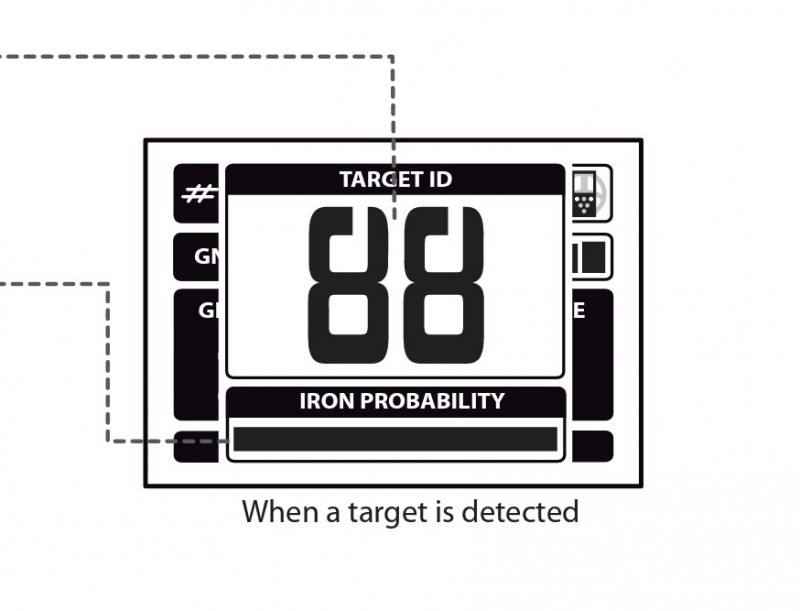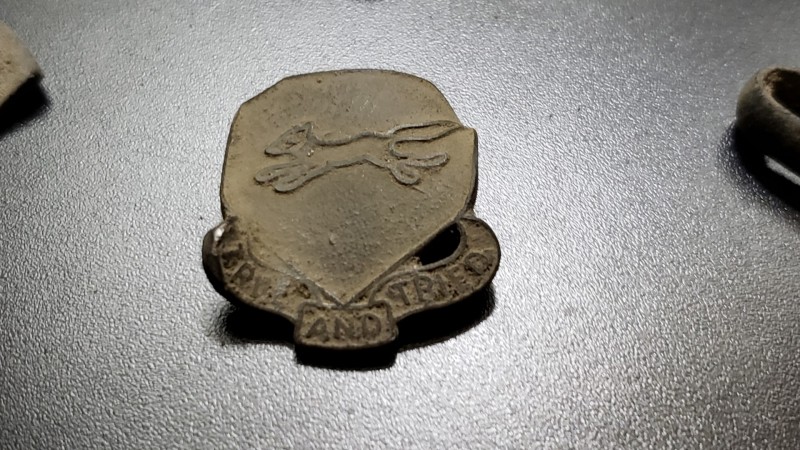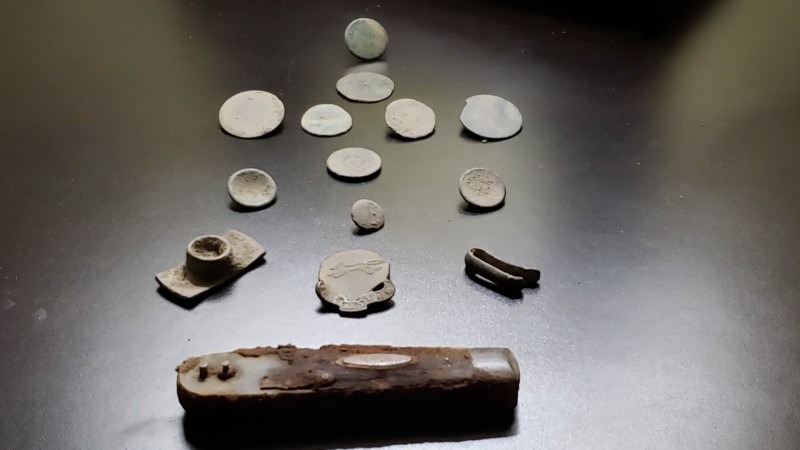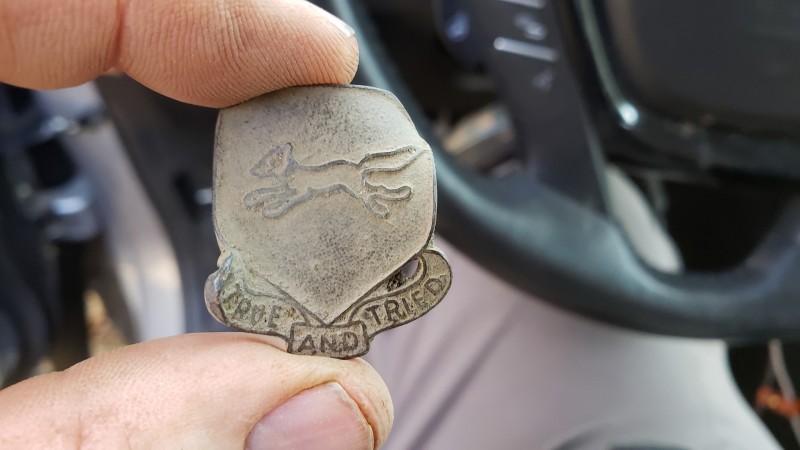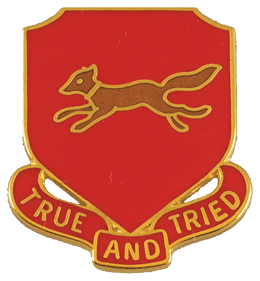-
Posts
6,119 -
Joined
-
Last visited
Content Type
Forums
Detector Prospector Home
Detector Database
Downloads
Everything posted by Chase Goldman
-
The safety hazard probably has little to do with electrical safety but the fact that lithium ion cell batteries are inherently thermally unstable and if the packaging is breached as a result of corrosive intrusion of say, salt water, into the battery compartment or mechanical damage to the battery pack (say from a poorly placed cutting blade) a thermal runaway fire could result. So while the risk is low, the consequence could be high. Whether XP Is overstating the risk, who knows. If you know what you are doing, great. If you don't, it is no laughing matter.
-

Thinking About Not Taking This Equinox 800 Under Water
Chase Goldman replied to Rick N. MI's topic in Minelab Equinox Forum
Yeah, those extended warranty companies are great until you actually try to collect on the warranty, then every obstacle and fine print clause against your ability to actually invoke it comes out of the woodwork. Never again... They make a guaranteed $45 or $75 or whatever you paid for it and you typically get a guaranteed runaround. -
In general, I agree with you - take control of your own destiny - especially if you are confident and proud of your skill set and competency to do this on your own. It also appears that XP endorses these DIY kits for out of warranty repair. However, some folks don't have the skill to do this properly and to retain watertight integrity of the coil. I certainly would not do it while the battery warranty is still in effect since you are cutting into the coil. I understand your point that service quality varies across the board, but folks need to be careful about lumping all repair sites into blanket assertions of competency - though I know this is influenced by personal experiences. Believe me, I have experienced my share of service fails on detectors and just about everything else. That being said, the US XP repair center in particular (there is only one and the repair team is trained by XP) stands behind their work. I personally know many people who have used them without complaint or issue and Deus Handbook author and Deus expert, Andy Sabisch who I work with personally gives them high marks too. This post provides approximate repair costs in the USA for various XP Deus/Orx components and although a couple years old, the repair costs have pretty much been stagnant for the last several years. Finally, it is worth noting that white HF coils use an external battery pod that resides in the lower stem attached to the coil and is easily user replaceable without any watertight barriers needing to be breached for replacement. Regardless of the approach you take, simply do your due diligence and homework and make an informed decision. HTH
-
USA XP repair center will do this replacement for about the same cost as the kit if you are not an adept DIYer. If I were planning to use the coil in the water, I sure as heck would not trust myself to do that repair and be assured of a fully watertight coil on the back end of that surgery. I would pay to have it professionally repaced. I have owned my Deus for over 5 years and the batteries are still going strong, but I know I will have to bite the bullet now sooner rather than later. Not something a new Deus/Orx owner has to worry about for at least 4 to 6 years.
-

A Few Notes On The Nokta / Makro Simplex +
Chase Goldman replied to cjc's topic in Nokta / Makro Metal Detectors
Clive, thanks for the writeup. I have not had much chance to use my Simplex much outside of my test garden. One thing I noticed there is that AM mode seemed to significantly lack depth and definition on target audio, while the same targets ring out great on Field, Park 1, and Beach modes. Have you noticed that? I actually find the "fast but shallow" Park 2 mode (which used to be the "old" Park mode pror to the last update) to be almost as bad as AM. The "new" Park 1 mode is pretty deep although with a slower recovery speed vs, Park 2. BTW in the above quote, did you really mean to say the "new Park 1"...mode as Park 2 is just the old Park mode from the original firmware. -
Yep George just beat me to that fella who was selling his on Tom D's site. Missed it by that much. Dang. Enjoy it, George. If things don't quite work out with it, send me a PM.
-

Orx And Equinox Hunting Close Together
Chase Goldman replied to Tometusns's topic in Metal Detector Advice & Comparisons
It dissipates pretty quickly within 10 or so feet distant, anyway it is a good way to force social distancing. Frankly, if someone is within the interference zone that means to me they are too close anyway. Equinoxes will interfere with each other too but the fix is easy, one of the dete torists just need to run a noise cancel and the problem is solved. So I agree with Steve's advice to shift channels on either the Orx (via frequency shift) and/or the Equinox (via noise cancel). -

Orx And Equinox Hunting Close Together
Chase Goldman replied to Tometusns's topic in Metal Detector Advice & Comparisons
Nope it sure doesn't. My hunting buddy who exclusively uses the Deus, won't let me fire up the Equinox nearby. In fact, I have been to contest hunts where the organizers ban use of the Equinox in multi mode. Go figure. I does spew some nasty harmonics out there. -

Eq 600 5 Khz Crushing Multi On Depth
Chase Goldman replied to CaptainCoinSpill's topic in Minelab Equinox Forum
Ok Captain, You have a lot of stuff going on here and I will try to address it individually. Why did you do that in the first place? As far as disc is concerned, just leave it at the mode default of 0, 1 or 2 as applicable, for now. Nothing is gained by cranking on disc, as you found out. BTW - how many tones are you typically running? I never buy the argument that you can't find a place to GB. Just turn the pinpoint mode on, swing the coil to a point where pinpoint is silent and pump the coil to GB there. Regardless, even if there is a huge variation in ground phase, it really should not result in a dramatic reduction in depth if not perfectly balanced. The main effect of improper GB on Equinox is just more ground noise (iron range grunts with TIDs of -9 to -7). In fact, people often mistake this ground noise for multiple ferrous targets (believe me, it's not). So the best method to determine if you have a target under the coil is to go to pinpoint mode. BTW - just as GB asked, what kind of trash are you encountering - ferrous or non-ferrous or both. Makes a difference in how you attack the site. If you are getting a lot of ferrous junk, then you will want to lower sensitivity and possibly increase recovery speed to enable you to "sift" through the ferrous. Lowering sensitivity lowers the propensity of the ferrous targets to overload the coil. Increasing the recovery speed setting enables you to unmask non-ferrous targets in the vicinity of ferrous targets. Using a 6-inch coil under those conditions helps you to fare even better. The deal hear is no at all about getting depth, but being able to hear those shallow keeper targets that have been masked and are invisible to detectors with slower recovery speeds. Coil control is also important - if you get a sweet, but intermittent, high tone. See if you can wiggle the coil across the target to lock into that tone repeatedly. If you can do that, then dig that keeper. I have no idea because I don't crank disk up that high, I seldom even use notch. In fact, I really prefer hunting with no disc using the horseshoe button as long as the iron is not too crazy. Otherwise, I just leave it at the mode default. If you want to disc out iron, don't set disc any higher than 2 and don't use disc to block out non-ferrous junk unless you are using basically a precision notch (e.g., 14 to 19 to knock of pull tabs an zincolns) and even in that case, I won't do it for fear of knocking out a gold target which can show up anywhere from 2 to 20+. I mostly hunt relics, so they usually fall right in the aluminum trash range. Try to hit sites without a lot of aluminum trash, but sometimes it just can't be avoided so you have to dig it unless you are experienced enough (which is a nice way of saying you have already dug a ton of aluminum) to know the tonal nuances associated with can slaw and bent tabs. You also said: How were you determining in the field which was the "better choice" between multi and 5 khz? Were you interrogating targets with multi and 5 khz or where you switching back and forth as you started getting less finds? Also, here is a little primer mode optimization for specific targets - Best general purpose mode is Park 1, it is also good for high conductors and larger targets. Field 1 is a great two-tone mode that also favors larger or more conductive targets. Park 2 and Field 2 are geared towards small targets, gold, and other primarily mid-conductive targets like nickels and brass/lead relics. Another variable is your iron bias setting. Too high and it can mask non-ferrous targets. Too low and you might be subject to more iron falsing. Note that iron bias is disabled while in single frequency. HTH. -

Eq 600 5 Khz Crushing Multi On Depth
Chase Goldman replied to CaptainCoinSpill's topic in Minelab Equinox Forum
Recognize also that unlike other detectors, Noise Cancel and GB settings are not universal to each multifrequency mode or even each frequency. To run an apples to apples test you should noise cancel and GB each mode and single Freq. separately and you may even find that the GB reading on the same patch of ground will be different for different modes. Also, I would suggest that you do your depth comparisons with discrimination removed (i.e., use the horseshoe button). Your observations seem atypical, so if these recommended normalizations and adjustments continue to show a huge disparity on depth performance, I would recommend contacting the service center. Good luck. -

White’s Electronics Done After 70 Years
Chase Goldman replied to Steve Herschbach's topic in White's Metal Detectors
Wondered when this day was going to come. COVID just accelerated the inevitable. -

Vanquish 340 Just The Facts Video
Chase Goldman replied to Jeff McClendon's topic in Minelab Metal Detectors
Yes, it has a mini-plug for headphones. My only knock against the 340 is that it doesn't have a pinpoint feature. A skilled detectorist can get away without one, but I do like to see that feature available for new detectorists to limit plug size. Good beginning detector value, nevertheless. -

Low Weighted Multi Vs 5/10 Khz To Avoid Tiny Targets
Chase Goldman replied to Argyris's topic in Minelab Equinox Forum
I'm a detector geek's geek, but I really can't get into this level of analysis on a feature we don't know much about on a tool that is inherently a crude instrument that is just measuring phase change and reactance vs. resistance based on induction balance for some metallic target that is obscured by the properties of the matrix of everything that is between the target and the coil. The best you can do is "infer" what the target is and let the programmers decide how they are going to process and interpret the target which is always going to be subject to human error because it is based on imperfect modelling of very complex, multi-variable physical parameters and principles. So, Chuck, I have no answers for you on why mixed metal coins ring up the way they do. I guess I would have to understand the models that formed the basis for the signal processing algorithms in Equinox and examine the source code. You think that is going to happen? We can't even get a straight forward layman's explanation of what Equinox is doing. When it comes down to it, metal detecting is more about feel than anything else. A metal detector, despite the technology (electronics, microprocessors, digital signal processing, etc.) is an inherently crude instrument. I detect mainly by feel, informed by a fundamental level of knowledge about what the settings roughly do in an ideal sense and then stick with what works for me. When I do get the chance to actually detect, which is not as frequently as I would like as I am still working and trying to put kids through college, I am really going for it and swinging the coil continuously for the few hours of bliss that I do have and that leaves little room for experimentation and rolling the dice on settings. I don't really have an ideal, tweaked machine philosophy. What I like to do is go with a nice, wide field general search program, detect a target and then quickly interrogate it using the versatility inherent in the machine I am using. That is why I prefer selectable multiple single frequency machines or multi-mode multi frequency machines like Deus and Equinox. Punch a button and illuminate the target with a completely different mode/frequency and see how the target responds and make a dig decision. Move around the target and try to lock in on the sweet signal if possible. Listen for tonal stability and distortion, iron buzz, determine the target footprint. I can do all that within about 10 to 30 seconds. I dig or move on at that point. As far as Iron Bias is concerned. I like F2 at the default. I know it might give me an edge off iron buzz, so I switch frequencies/mode to see what else happens to the target signal. All iron bias is there to do is to process what it interprets as a mixed ferrous/non-ferrous signal based on Multi F interpolation and cheat the tone over to ferrous. The degree to which it does that is determined by the IB setting. FE is limited to the middle of the range so it has a more subtle change in response over it's range. Whereas F2 has a wider dynamic range and is therefore more pronounced with each step change. In multi, I think there is always going to be some level of iron bias processing applied to the target even at the "0" settings. FE probably more so than F2. Bottom line, I prefer F2 but keep it near the default (4 to 6) and can't go much lower in my hot dirt and get any useful information when running in horseshoe mode. This is similar to Jeff's experience. Yes I am primarily a relic hunter but my best silver has come out of relic sites including several seated coins and a Mexican 1/2 reale. The silver targets were unmistakable. To be fair, however, I have not had as much F2 run time and most of my latest silver finds were with Deus/Orx. I probably have not found a silver (though plenty of clad) since the version 2.0 SW has come out. If you have multiple targets under the coil detection field including ferrous/non-ferrous, it can mask the non-ferrous which can work opposite to the recovery speed setting. Coil control and interrogation with multiple modes can help you make the decision or avoid a masked target. Simple as that. I can't describe coil control and feel because it has become second nature to me. I don't like to talk settings because, other than setting up a newbie, I basically dial in based on the site conditions and what is working and not working and go from there. If someone wants to nerd out in their test garden (Chuck I am talking to you and your 3-4-5 right triangle tubes), I think we have an opportunity to determine something a lot of us have just taken as gospel but have not actually tested for ourselves. Is F2 = 4 actually equivalent to FE = 0 as we have been preaching since last summer/fall or whenever Equinox 2.X software was released. Chuck you mentioned that at F2 = 6 you got an edge of iron buzz and decided to dial F2 all the way down to 0. If F2 = 4 is equivalent to FE=0 then you must have been getting an edge of iron buzz in FE =0 off deep coins for the entire time until Version 2 came out. But I can't believe that was really the case. Perhaps you can test FE vs. F2 settings on some deep silver in your test bed and see what the "false iron buzz" response on non-ferrous actually turns out to be. I know that at the beach deep quarters will give me an iron buzz but the ID is fairly stable and that is how I can tell them apart quite easily from high ringing but unstable bottle caps. Anyway, give it a shot. Meanwhile, I will hopefully get a chance to do some detecting this week and I plan on just going with the F2 defaults for now. HH everybody. -

Low Weighted Multi Vs 5/10 Khz To Avoid Tiny Targets
Chase Goldman replied to Argyris's topic in Minelab Equinox Forum
Just leave it at the default, if you don't have iron, it is not going to mask anything. You can give it a try, but F2 = 0 is just very chatty on land for me. I will not go below F2 = 4 which is equivalent to FE = 0. Have not had a lot of opportunity to beach hunt with F2 as it just came out at the end of last year's beach season for me and haven't been to the beach since. Don't over think it and if you have are curious, just set it to the setting you want and see what happens. If you are finding stuff, avoid the urge to tweak. If it ain't broke, don't fix it. Nice ring. -

Equinox Waterproof Headphone Question
Chase Goldman replied to Dan(NM)'s topic in Minelab Equinox Forum
I must say, however, that for piezos, Tony's phones sound pretty good above and below the waterline. I have Pelsos and some modified GG amphibs with Tony's piezo drivers. Tony's are not as loud as the Pelso's but Tony's drivers fixed what was basically an unusable muddled GG stock amphib pair that he modified for me for EQ use. I can only imagine his full up phones are indeed as good as people say they are based on what he did to fix the GGs. If you need to go with something that can just survive occasional dunking, the Pelsos sound great and can be used full time. -
Use the optional iron tone for discriminated ferrous and iron probablity tools built into your Orx and the big iron should grunt off the edge and not just ring up high. Pinpoint or gold field should also give you an idea of target footprint since they are pitch-based audio.
-
That is some awesome detective work and also an incredible find!
-
I guess in order to get more DP views, Crosswinds you might consider posting this in https://www.detectorprospector.com/forums/forum/46-metal-detecting-for-coins-relics/ as mostly only XP users would do a drive by here if they are not monitoring the all posts ticker. Definitely don't be shy in showing it off, amazing little treasure whatever it is.
-
Him going to FB doesn't keep DP folks from chiming in in the meantime. I thought the idea of DP was to provide advice and help. I'm pretty good at ID-ing weird stuff that comes out of the ground. Just providing some additional resources for the OP based on success I have had on that site when I've been left scratching my head. I understand that FB is not everyone's cup of tea. As such, I have offered in the past to post pics as a proxy for members here who don't have an account. MD related information is about the only thing I use FB for.
-
Man I am stumped but that is one beautiful little find regardless of what it is. If you have FB, I would suggest posting it on the ID Me group page. I found what turned out to be a brass Army National Guard unit ID pin in Georgetown that was associated with the local Georgetown National Guard unit (made sense). I had no idea but an ID Me user tagged a clean picture of what it was within about 30 minutes of posting. Mystery solved.
-
Not good!
-

Interview With The Tarsacci Inventor Dimitar Gargov
Chase Goldman replied to Aaron's topic in Tarsacci Metal Detectors
I knew you'd break before I would - Steve. Ha, ha. Didn't stop me from perusing the Tarsacci offerings out there. I already have the piggy bank reserved for a couple other machines for this summer. If it doesn't all work out to plan, perhaps I'll take the dive. -
I was digging in G-Town on a plantation with Calabash Digger last year and had a great time. Dug a lot of buttons and Calabash dug a reale that I probably walked over.


